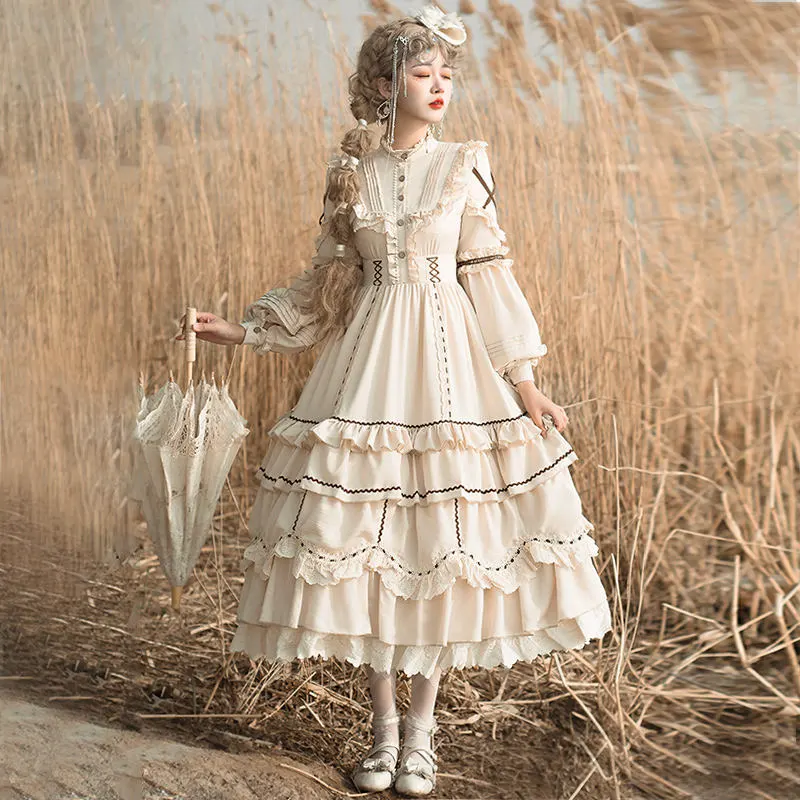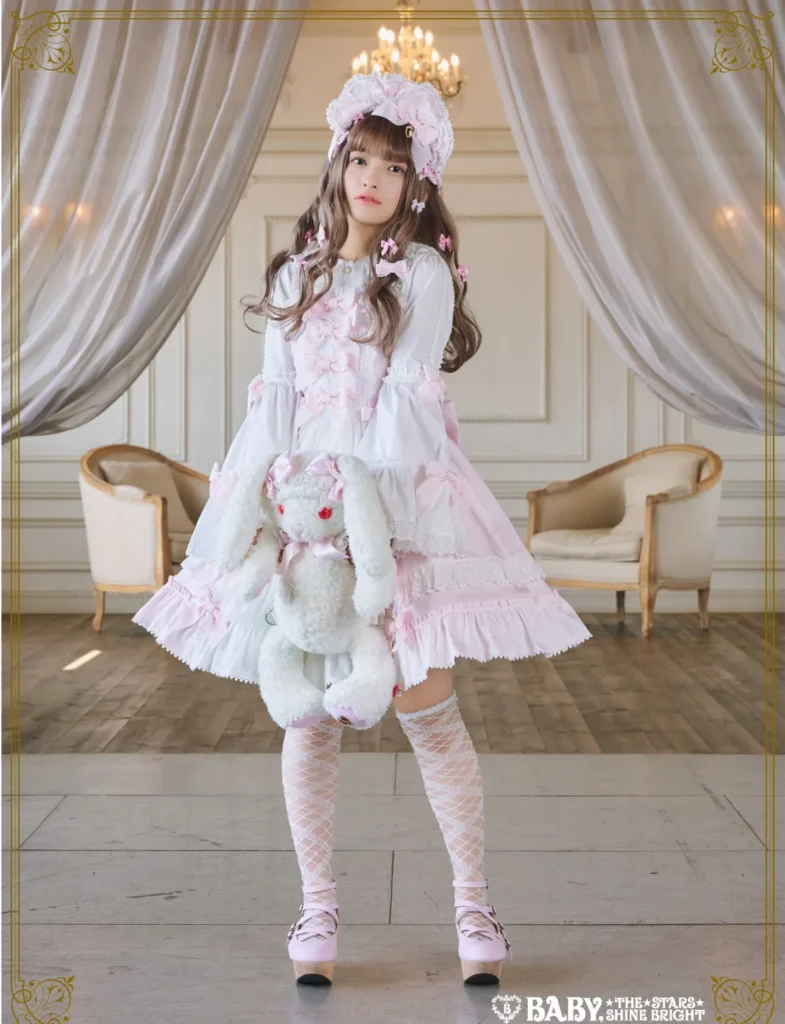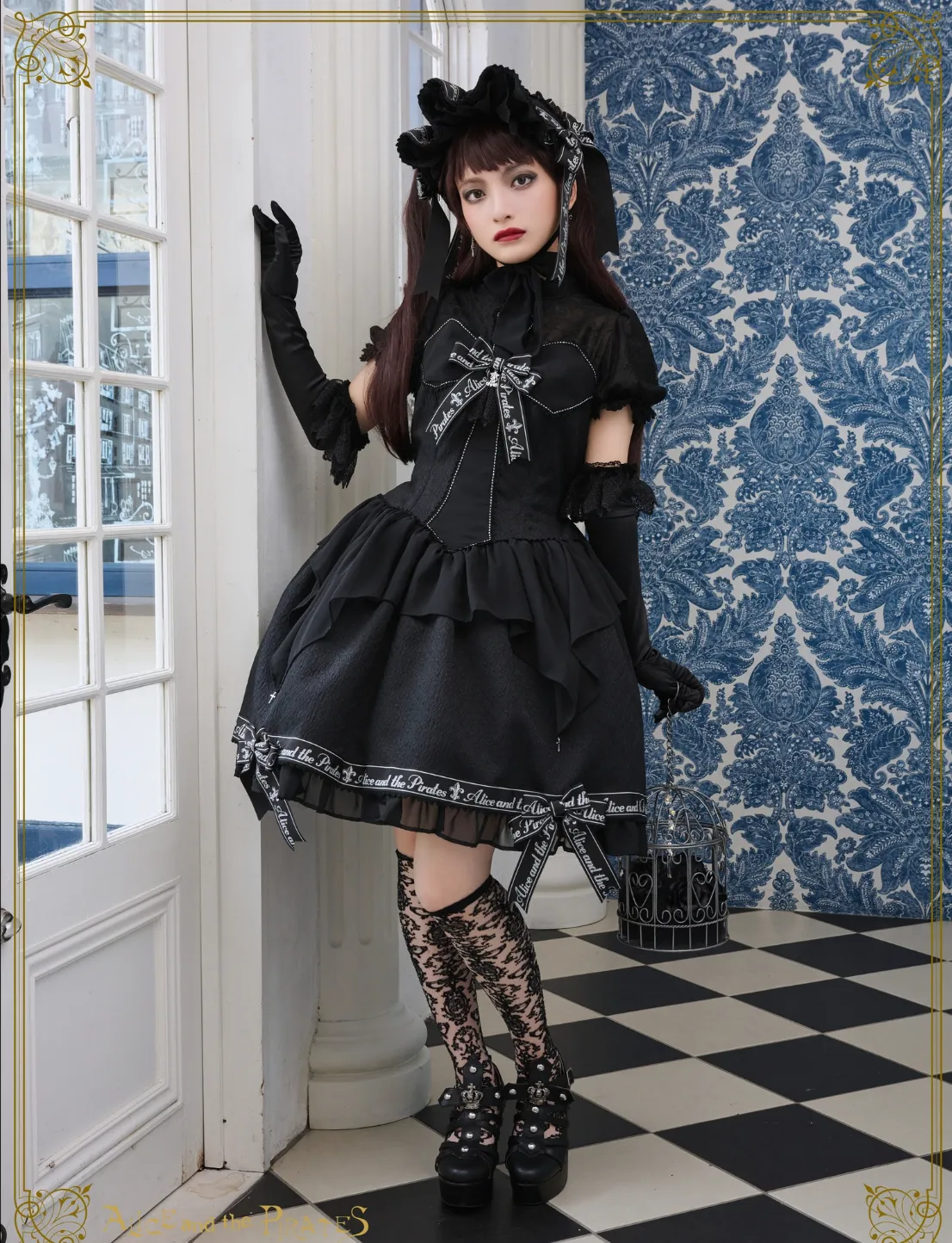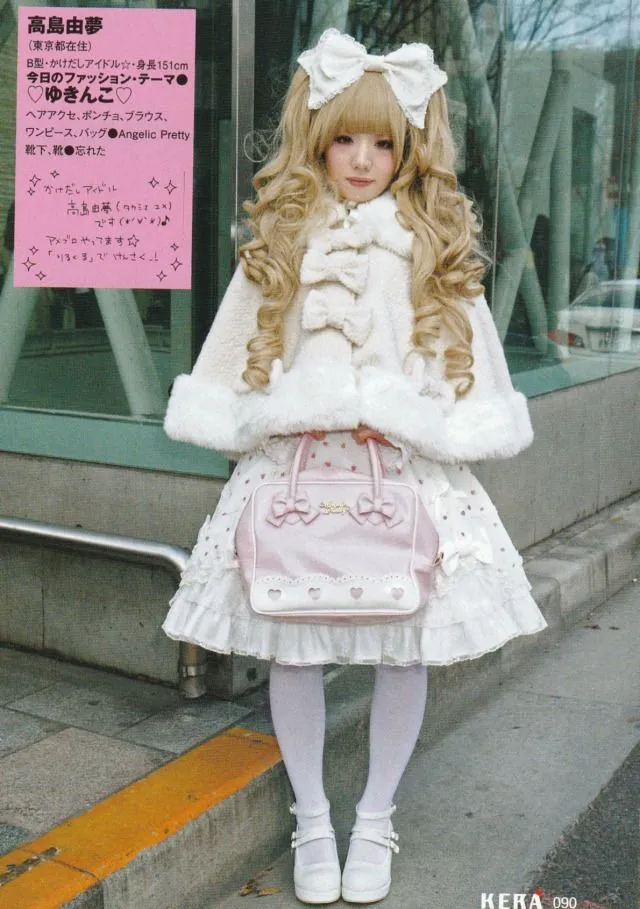Forget what you think you know about “Lolita.” Lolita fashion is not about Nabokov’s infamous novel—it’s a rebellion wrapped in ruffles. A celebration of femininity that doesn’t conform. Think pastel petticoats, parasols, and Rococo-inspired lace, but with a punk edge that challenges mainstream ideals of “maturity.”
Lolita Fashion: Where it all began
The origins of Lolita fashion
This subculture traces its roots to Japan’s dynamic streetwear scene of the 1970s and 1980s. Influential Japanese brands like Milk, Pink House, and Comme des Garçons laid the foundation with their romantic and girlish aesthetics. By the 1990s, the style flourished, influenced by the rise of Visual Kei—a Japanese music genre characterized by elaborate costumes and theatricality. Fans of Visual Kei adopted ornate, gothic looks, paving the way for Lolita’s intricate ensembles.
The Harajuku neighborhood of Tokyo played a pivotal role in Lolita fashion’s evolution. As a hub for youth subcultures, Harajuku became a melting pot of creativity. Early Lolitas gathered there, inspiring one another and gaining visibility through publications like Fruits, a magazine that introduced Japanese street style to the world.
Lolita Fashion Beyond Japan
The global fascination with Japanese culture, bolstered by the rise of anime, manga, and cosplay communities, has catapulted Lolita fashion onto the international stage. For many, Lolita serves as a gateway into the vibrant and nuanced world of Japanese streetwear, offering a deeper appreciation for the craftsmanship and storytelling embedded in the style.
However, Lolita fashion is fundamentally different from cosplay. While cosplay involves dressing up as a specific character from pop culture, Lolita is about personal expression and individuality. It’s a celebration of the wearer’s unique identity, encapsulated in carefully curated outfits that reflect a blend of elegance, playfulness, and rebellion against conventional fashion norms.
Sub-styles for all kinds of cute
Lolita fashion is a diverse and intricate world, with a variety of sub-styles that each embody unique expressions of femininity. Here, we explore the three main categories that define this captivating aesthetic.
Classic Lolita: personified elegance
Classic Lolita is the embodiment of Victorian-inspired elegance. It is capturing the essence of timeless sophistication while maintaining the fundamental aesthetic of Lolita fashion. With a focus on modesty and grace, Classic Lolita leans towards an A-line silhouette, although bell-shaped petticoats still remain a favorite.

Sweet Lolita: enough frills to make a cupcake blush
Sweet Lolita is the most recognizable and widely embraced Lolita style, especially popular on social media for its candy-colored chaos. Known for its pastel color palette—pinks, blues, lavender, and mint—Sweet Lolita features playful, girly aesthetics.

Gothic Lolita: perfect for midnight tea parties
Gothic Lolita, often introduced through anime and manga, is a style that blends traditional Lolita elements with Gothic influences. Rooted in Victorian Gothic fashion, Gothic Lolita maintains the classic modesty of Lolita but with a darker twist. The color palette is dominated by rich hues like black, navy, and burgundy, often paired with contrasting elements such as black and white.

Ready to explore more of Lolita fashion and discover where you can find these stunning pieces? Check out our comprehensive guide to the best vintage stores, where you can shop for unique Lolita styles and bring your fashion dreams to life!
Why Lolita Fashion Matters
At its core, this subculture challenges conventional ideas of maturity and femininity. It empowers wearers of all ages to embrace whimsy and individuality, using petticoats, lace, and voluminous jumperskirts as a form of self-expression.
Lolita fashion continues to evolve, blending traditional elements with modern influences. Whether in the bustling streets of Harajuku or on global runways, it remains a powerful symbol of creativity, community, and individuality.
Cover picture credentials:「KERA」 2012
![[NANIKA]](https://nanikajapan.com/wp-content/uploads/2024/10/cropped-NANIKA-LOGO-transp.png)

Leave a Reply